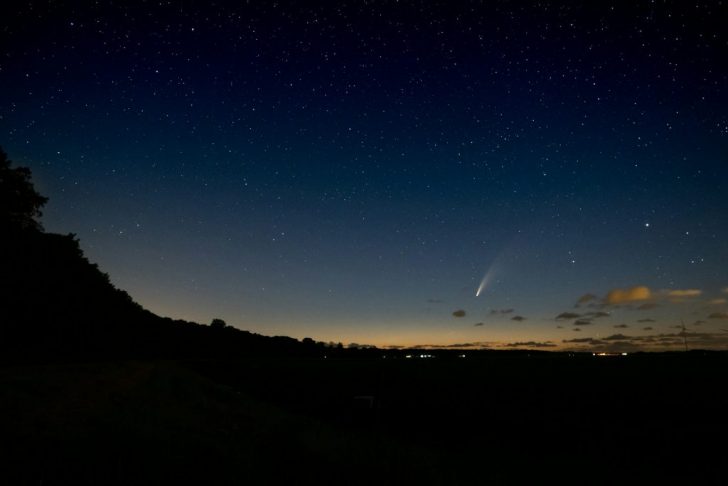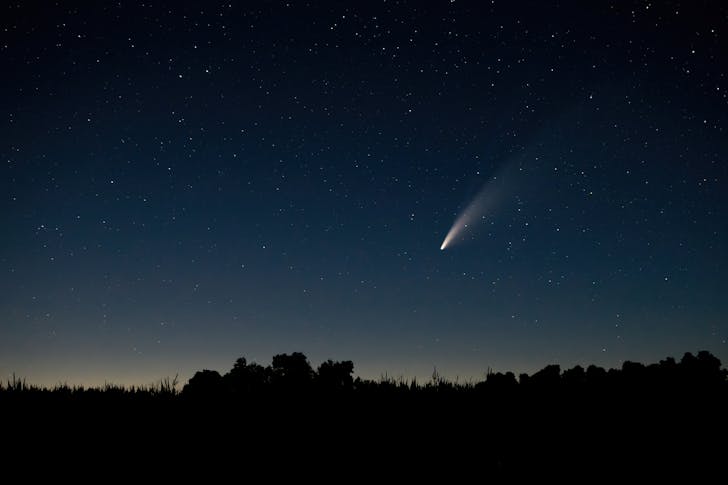Have you ever wondered: What color are comets? Well, it is a question that often intrigues both amateur stargazers and seasoned astronomers. Comets are fascinating celestial objects, and their colors can tell us a lot about their composition and the environments they travel through.
Comets are icy bodies that originate from the outer regions of the solar system. When they approach the sun, the heat causes them to release gases and dust, forming a glowing coma and often a tail.
These comas and tails can exhibit various colors, depending on their chemical composition and their interaction with solar radiation.

The Mystery of Green Comets
Among the many hues, green comets are particularly captivating. But just how common are green comets? Green comets occur when certain molecules in the comet’s coma, especially diatomic carbon (C2), react to sunlight. When these molecules are excited by ultraviolet radiation from the sun, they emit a green light.
Hence, some comets appear to glow green as they approach the sun.
How Common Are Green Comets?
Observations suggest that a significant number of comets exhibit green hues at some point in their orbit. However, the intensity and visibility of this green glow can vary. It depends on the comet’s composition and the proximity to the sun.
Notable examples include Comet Lovejoy and Comet 46P/Wirtanen, both of which displayed a striking green color.
What Makes Comets Green?
So, what makes these comets green? The green color primarily comes from the molecule diatomic carbon. When diatomic carbon is exposed to ultraviolet radiation, it gets excited and emits green light. Another contributor to the green hue is cyanogen, which also fluoresces green under ultraviolet light. The presence of these compounds in the comet’s coma is a clue to the comet’s origin and the materials it contains.
Throughout history, green comets have captured the human imagination. Ancient civilizations often recorded these celestial events, sometimes attributing them to omens or divine messages.

In more recent times, astronomers use modern telescopes and spectroscopy to analyze the light from comets and determine their composition. These green comets continue to provide valuable data about the building blocks of our solar system.
How to Observe Green Comets?
If you are lucky enough to witness a green comet, it’s an experience you won’t soon forget. These celestial visitors, with their vibrant green glow, stand out against the night sky. To observe a green comet, you will need a clear, dark sky away from city lights. A good pair of binoculars or a telescope can enhance the viewing experience.
Keep an eye on astronomical forecasts and comet trackers to know when and where to look. The unpredictability of comets means that any given year could bring a surprise green comet into view, offering a rare chance to see one of nature’s most beautiful phenomena.
So, what color are comets? Well, they can be yellow, blue, or even green, depending on their composition and interaction with the Sun. Green comets, though rare, are a breathtaking sight and offer a unique glimpse into the complex chemistry of these ancient celestial bodies. The next time you hear about a green comet approaching, make sure to look up and enjoy the view!




